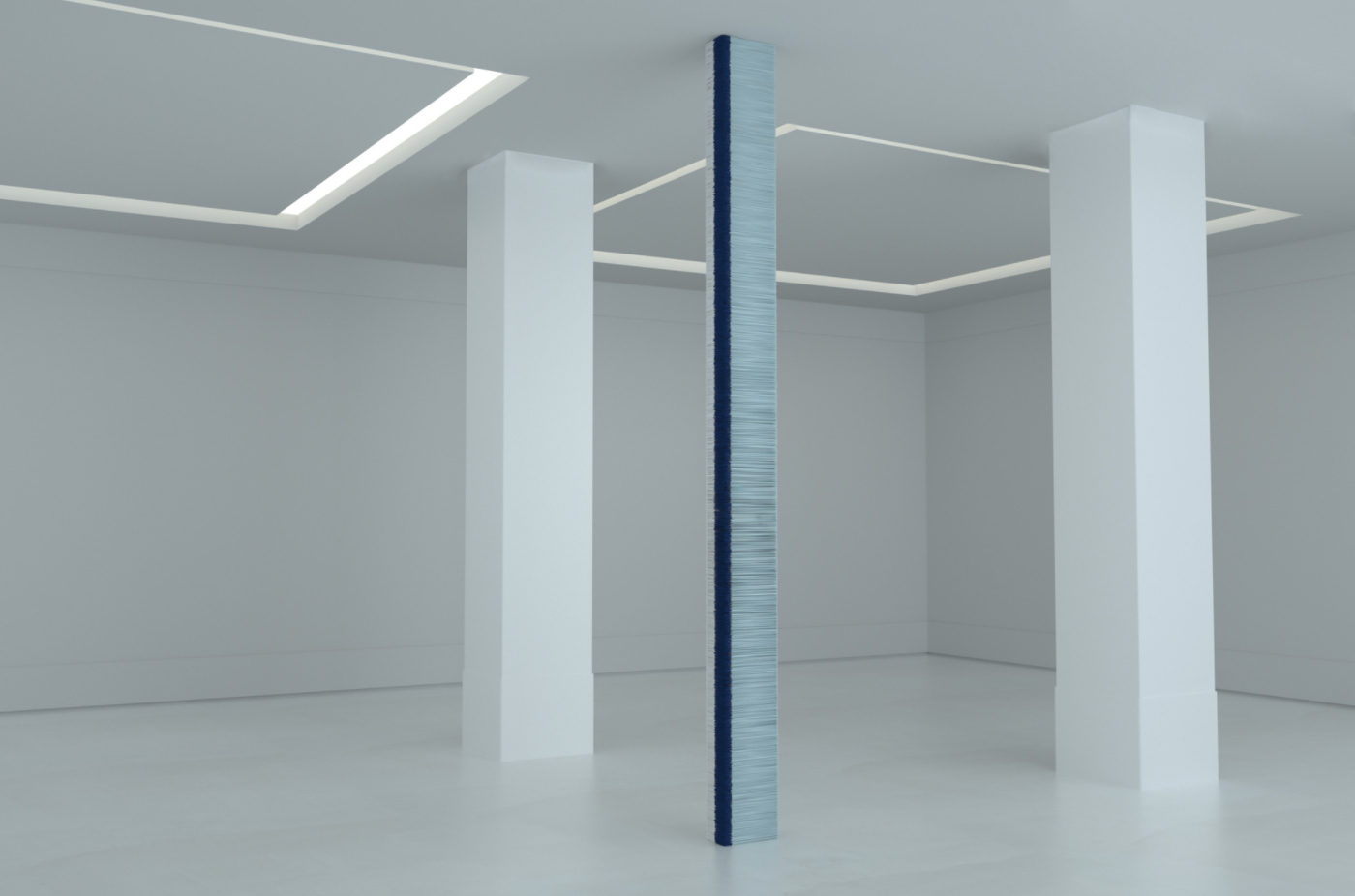

Pile
Rodrigo Moreira
Insatllation
height may vary x 4.5 x 8.5 inch
2018
(New York)
“Pile” is an installation made of paper stacks from floor to ceiling. Formed by the original US Customs and Border Protection survey, the paper pile becomes a column which supports the gallery’s physical structure.
Rodrigo Moreira is a Brazilian multidisciplinary artist creating poetic interventions on social issues that emerge in everyday life. His projects are related to systems of communication and how images and text can evoke and subvert certain ideologies. Appropriating elements from mass-communication such as advertising, graphic design, online archives, and newspapers, Moreira creates works in printmaking, urban intervention, video, and text. Moreira was a 2019 fellow of the AIM Program of The Bronx Museum.
Interview of Rodrigo Moreira
Can you talk a little bit about the entire series of NSA (No Strings Attached)? How did it come about? What stage are you in in terms of the entirety of the series?
When applying to a visa before moving to the US, I was requested to provide a long list of documents and personal information during the process, with absolutely no guarantee of acceptance. It was interesting to see how much data the government was holding about me, even during the earlier stages when I was applying for a tourist visa and later on for permanent residency. I took that opportunity to create a fictional relationship imaging a supposed government officer collecting information about me, as I was developing this one-sided romantic relationship.
In many ways, immigration for me is like a romantic relationship, as in both situations you have to deal with boundaries, control, fantasy, and expectations. I was also interested in understanding the nature of this relationship. Taking in consideration the lack of commitment, transparency and complicity from both sides, I can only think of something like ‘no strings attached’. The NSA acronym also refers to National Security Agency, which brings a political dimension into the equation.
So, for the NSA series I’ve been creating works related to both personal and political aspects of immigration in a variety of mediums including printmaking, installation, video, web-based projects, and photography.
I’ve seen it as an ongoing project, as it is really linked to my identity as an immigrant living in the US and how I relate to a different culture.
Pile (NSA)is made of forms of original US Customs and Border Protection survey. How did you gain access to these forms, and why are they crucial to this piece?
Pile is an installation composed by a stack of the original US Customs and Border Protection survey from floor to ceiling. The survey was originally handed out on planes getting into the US and at the airport. Everytime entering the country, I would keep some copies with me.
For the installation, I reproduce its content and layout in order to have as many copies as necessary to create the pile. In the gallery context, it becomes a column that supports the building structure as a visual metaphor for immigration.
You are originally from Brazil, but now living and working in New York City. What have you learned, as an artist, from this transcultural and transnational experience?
It is interesting having different perspectives of the art world in Brazil and the US, how organizations work and possibilities to make your practice active and visible. I am highly motivated by what is happening around me from a social and political perspective and both countries have so much going on, so much inspiration and rich cultural lives. It is a great position to be as an artist and being able to join the conversation making work about difficult and urgent topics. As an immigrant artist, I feel like I need to combine both experiences to find a middle ground where I feel more comfortable.
Facing the global pandemic, how do you understand the new normal? How will you incorporate your art-making into this adjustment to a brand new world?
I hope we can keep the slow pace and put in place more cooperative political practices. If anything, this time has forced us to think about speed, space, and relationships. We will need to rethink how we relate to public spaces, mobility and interactions.